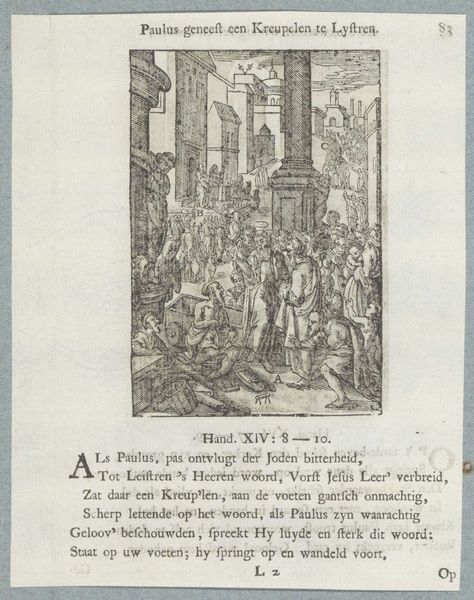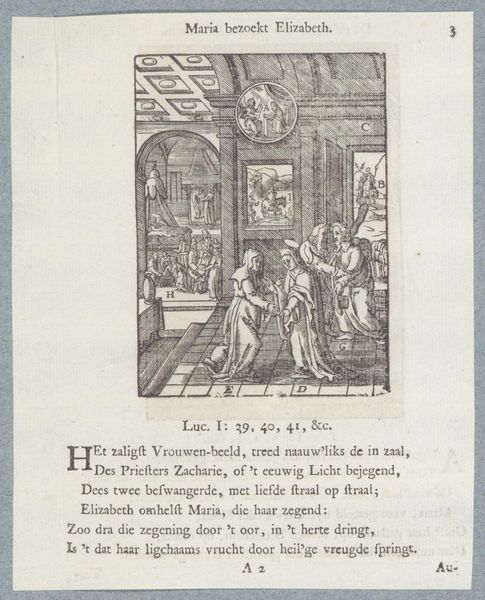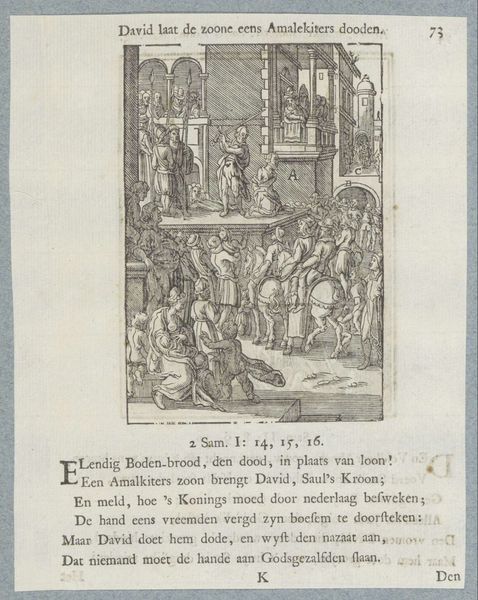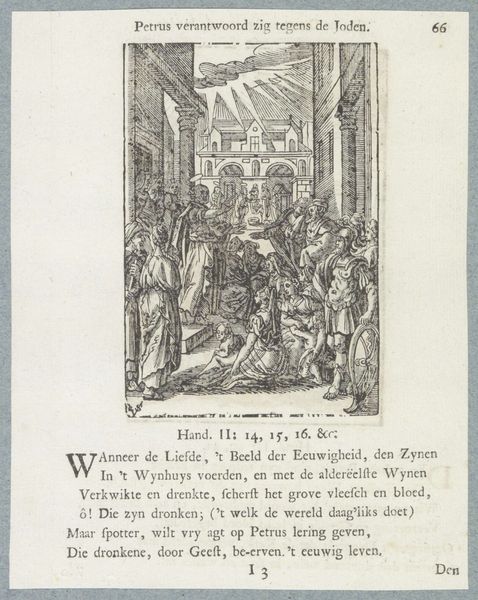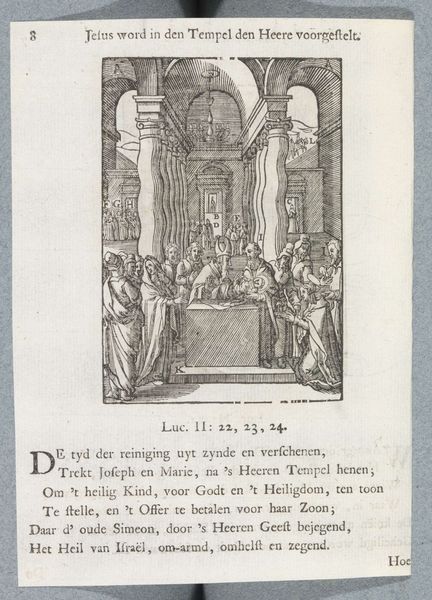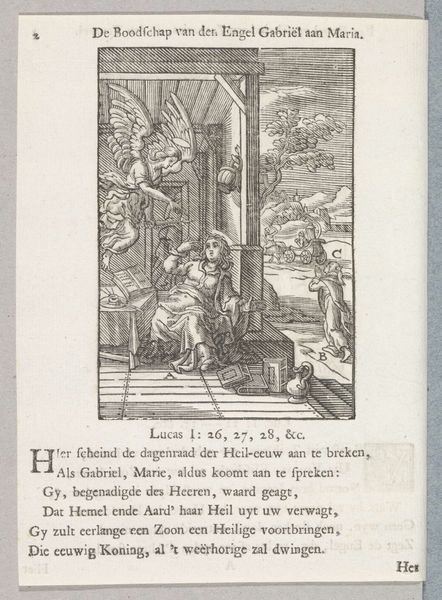
drawing, print, engraving
#
drawing
#
narrative-art
# print
#
figuration
#
form
#
line
#
history-painting
#
northern-renaissance
#
engraving
Dimensions: height 111 mm, width 75 mm, height 172 mm, width 133 mm
Copyright: Rijks Museum: Open Domain
Curator: Here we have "Maria Magdalena zalft de voeten van Christus," a work attributed to Christoffel van Sichem II, though its precise date floats between 1629 and 1740. This piece at the Rijksmuseum is a print, an engraving, with strong lines, and text integrated into the scene. Editor: Immediately, I'm drawn to the composition. It's so deliberate, this careful arrangement of figures within that architectural space. The stark contrast emphasizes form above all else. Curator: The choice to depict this biblical narrative - Mary Magdalene anointing Jesus's feet - is laden with meaning, particularly concerning the portrayal of women in religious art and the concepts of sin, redemption, and societal expectations placed upon female figures. Editor: Precisely, but let's look closely. The artist's use of line, the precise hatching and cross-hatching, creates a dynamic play of light and shadow, and a definite mood. Curator: Considering when it was created, or potentially recreated depending on the dating, it resonates with the prevailing socio-political norms about women and faith. It certainly seems indicative of Northern Renaissance styles while alluding to intersection of faith, gender, and societal redemption. The engraving medium itself facilitated broader dissemination of religious teachings during a period of immense societal transformation. Editor: Agreed. However, that emphasis on line dictates the scene. See how it flattens the forms, almost deliberately, and reduces volume? Even the text below integrates as pattern, an element for overall surface design. Curator: And this would speak to a public constantly bombarded by such imagery. How many of these images reflected an opportunity for the disenfranchised, particularly women, to participate actively within the public and the divine space? I find its engagement of socio-historical expectations quite brilliant in its subtleties. Editor: A reading with clear sociopolitical underpinnings and consideration. Still, without a proper understanding of how the piece makes use of pictorial space and surface texture we lose something vital. I would suggest more structural engagement could yield interesting perspectives about artistic trends in its era. Curator: Interesting. What remains crucial, however, is remembering these are not isolated aesthetic objects. Rather, they function in relation to their time. Editor: Well, put. Perhaps the beauty lies in acknowledging both dimensions are vital and inextricable in appreciating this narrative engraving.
Comments
No comments
Be the first to comment and join the conversation on the ultimate creative platform.
